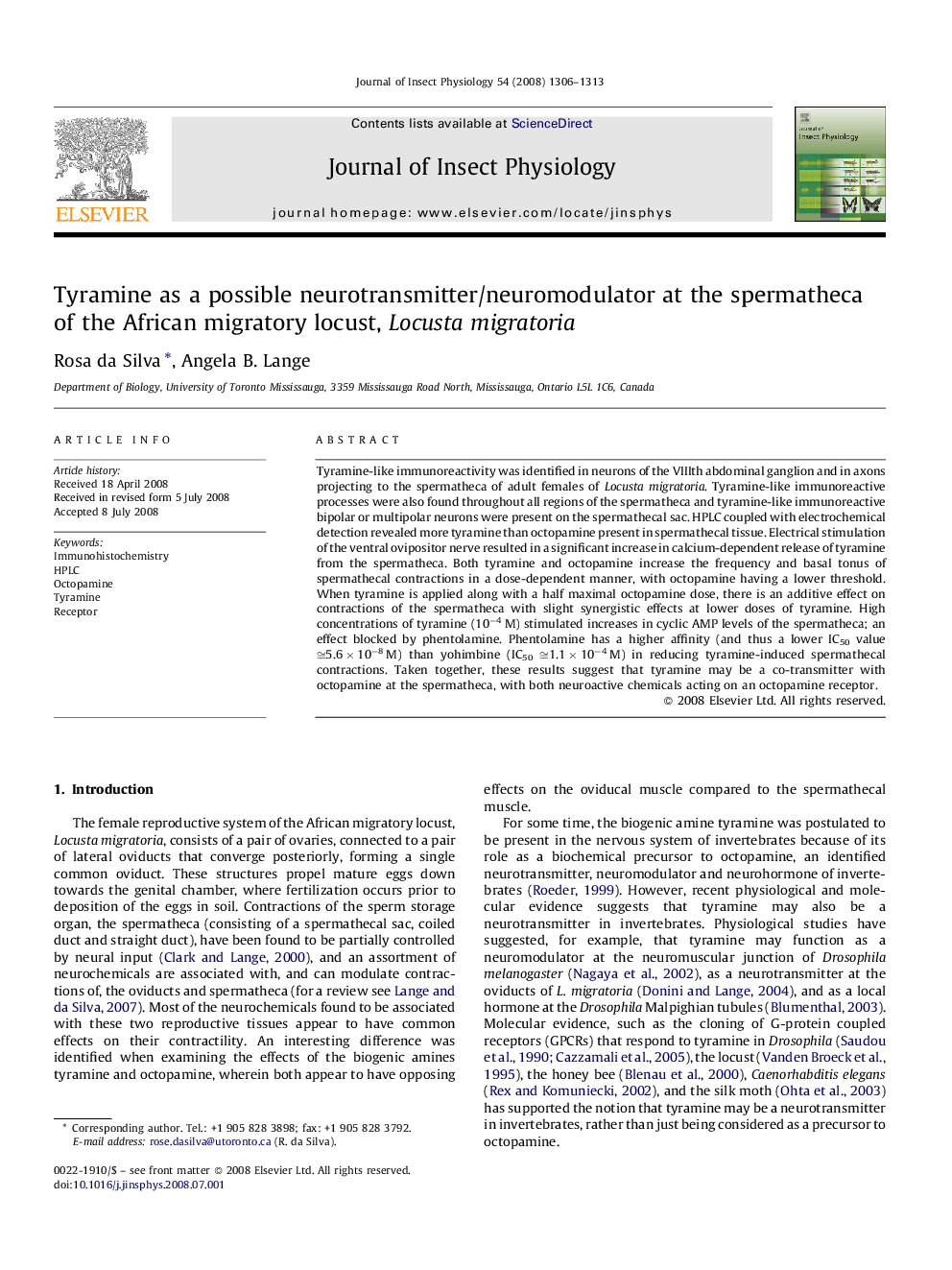| کد مقاله | کد نشریه | سال انتشار | مقاله انگلیسی | نسخه تمام متن |
|---|---|---|---|---|
| 2841205 | 1165383 | 2008 | 8 صفحه PDF | دانلود رایگان |

Tyramine-like immunoreactivity was identified in neurons of the VIIIth abdominal ganglion and in axons projecting to the spermatheca of adult females of Locusta migratoria. Tyramine-like immunoreactive processes were also found throughout all regions of the spermatheca and tyramine-like immunoreactive bipolar or multipolar neurons were present on the spermathecal sac. HPLC coupled with electrochemical detection revealed more tyramine than octopamine present in spermathecal tissue. Electrical stimulation of the ventral ovipositor nerve resulted in a significant increase in calcium-dependent release of tyramine from the spermatheca. Both tyramine and octopamine increase the frequency and basal tonus of spermathecal contractions in a dose-dependent manner, with octopamine having a lower threshold. When tyramine is applied along with a half maximal octopamine dose, there is an additive effect on contractions of the spermatheca with slight synergistic effects at lower doses of tyramine. High concentrations of tyramine (10−4 M) stimulated increases in cyclic AMP levels of the spermatheca; an effect blocked by phentolamine. Phentolamine has a higher affinity (and thus a lower IC50 value ≅5.6 × 10−8 M) than yohimbine (IC50 ≅1.1 × 10−4 M) in reducing tyramine-induced spermathecal contractions. Taken together, these results suggest that tyramine may be a co-transmitter with octopamine at the spermatheca, with both neuroactive chemicals acting on an octopamine receptor.
Journal: Journal of Insect Physiology - Volume 54, Issue 8, August 2008, Pages 1306–1313